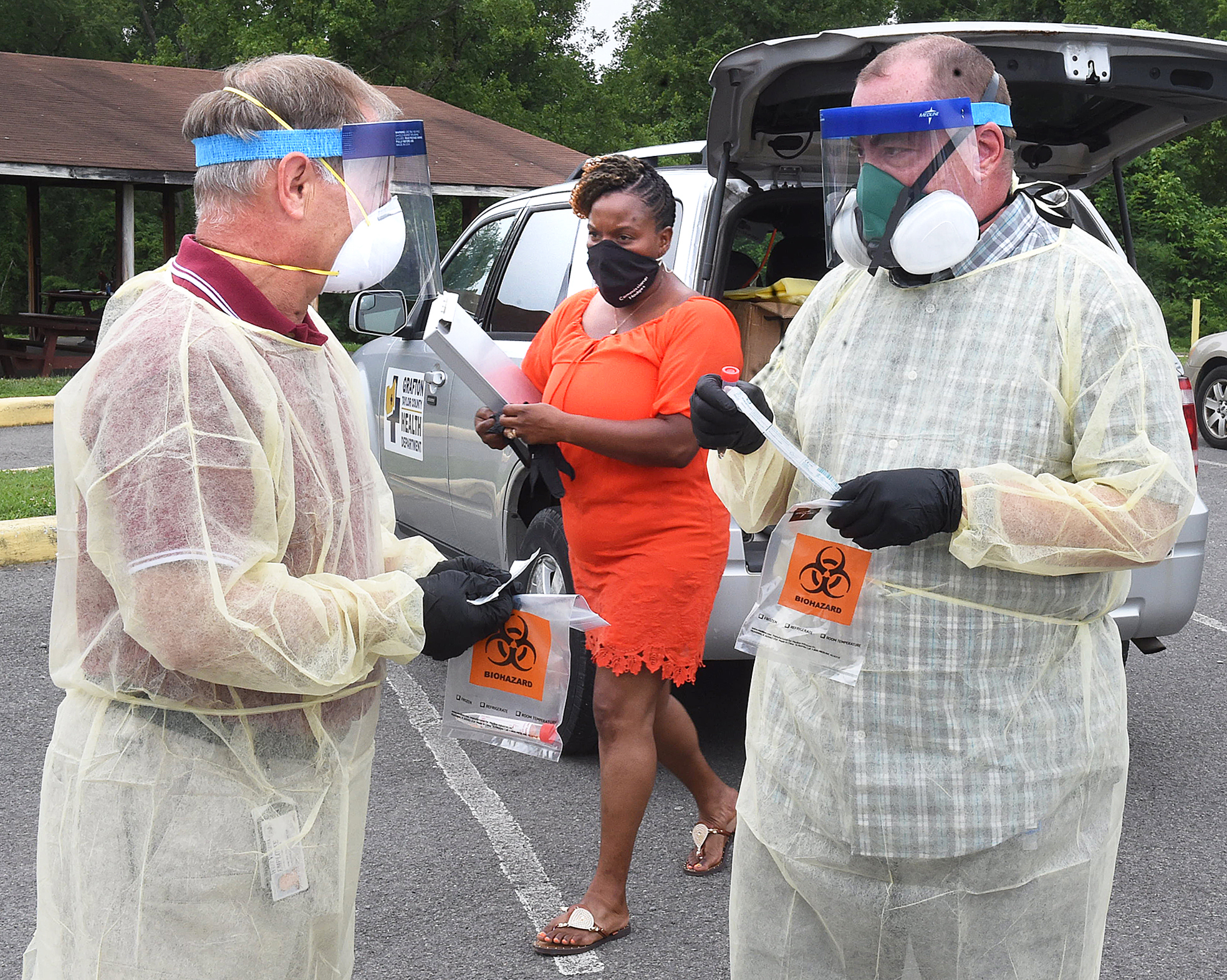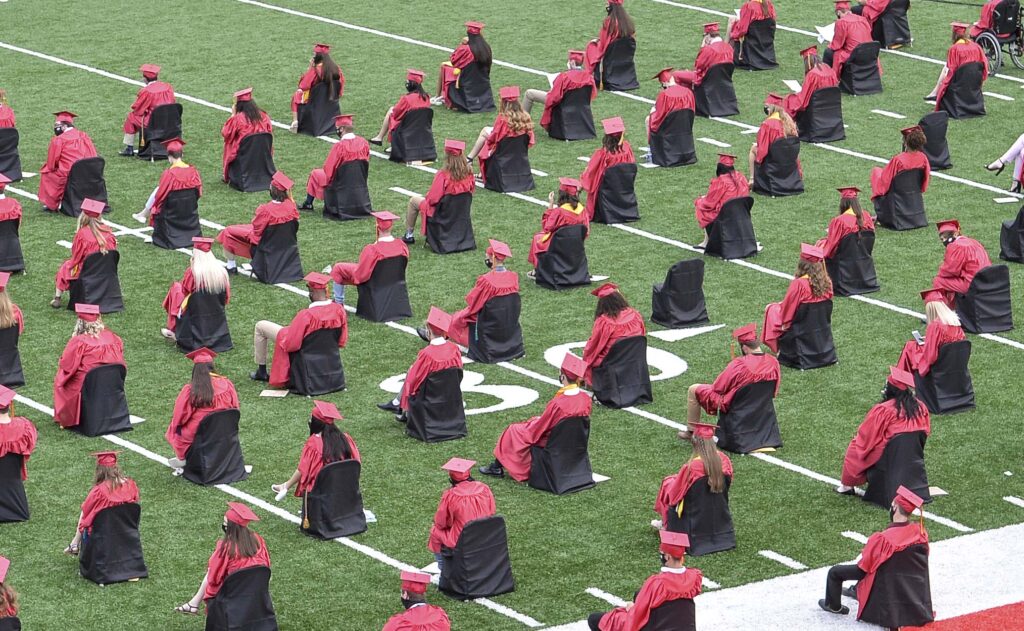When March began in 2020, we were all going about our business as usual.
Waiting for tables in crowded restaurants, attending concerts, sitting shoulder to shoulder in movie theaters, heading into the office every day, ushering children off to school.
Very few of us had ever worn a face mask at all, let alone to the grocery store.
Headlines about the virus tearing through Asia were out there, and the warnings of its toll on Europe were getting louder. But here in the United States, we were still carrying on like normal, with little idea of what was lurking at our doorstep, set to change our collective experience and our lives forever.
A global pandemic, the first ever sparked by coronavirus, according to the World Health Organization: Science changing nearly daily as officials learned new things; health and safety guidelines shutting us indoors, keeping us away from our coworkers, friends and loved ones.
A pandemic that has killed, to date, 2.6 million people worldwide — more than half a million in the U.S. alone.
At latest numbers, West Virginia has said goodbye to 2,519 people since the state’s first confirmed death on March 29, 2020.
During his regular COVID-19 briefings, Gov. Jim Justice urges his audience to never allow those people to become statistics, to remember their names and the cost of this virus.
As more vaccines become available and more people are able to be inoculated against the disease, officials hope we may see a reduction in the virus’ deadly effects.
But it’s uncertain if we’ll really ever return 100% to the “normal” we knew before.
So, at the one-year mark of COVID-19 coming to the Mountain State, The Dominion Post has gathered some milestone moments here.

- Jan. 9, 2020: WHO issues an alert to a new virus in Wuhan, China.
- Jan. 21: First case confirmed in U.S., in Washington State. Person had recently traveled to Wuhan, China.
- Jan. 31: WHO issues Global Health Emergency.
- Feb. 3: Trump administration declares Public Health Emergency in U.S.
March 2020
- March 6: More than 20 passengers on a U.S. cruise ship test positive; forced to quarantine onboard; ship held at seas while passengers tested.
- March 11: WHO declares COVID-19 a global pandemic.
Gov. Jim Justice begins giving daily briefings on COVID-19. - March 12: State issues employee travel ban.
Visitation restricted at all nursing homes in West Virginia, except to those experience life-ending or very serious illness. - March 13: Justice closes all schools in the state.
Trump declares the virus a National Emergency; travel ban instituted for all non-citizens traveling from Europe to U.S. U.K. is excluded in the ban. - March 16: Justice declares State of Emergency in W.Va.
- March 17: First coronavirus case confirmed in the state, in the Eastern Panhandle.
Bars, restaurants, casinos, then gyms, health clubs and recreational facilities closed. - March 19: Justice issues executive order ensuring unemployment benefits.
All hair and nail salons closed.
First COVID case in Mon County confirmed. A pastor at Chestnut Ridge Church, contracted it overseas. - March 20: All lodges at state parks closed. Hatfield & McCoy trails closed.
- March 23: Justice issues Stay at Home order; residents are asked to limit activity outside the home to essential trips (urgent medical appointments, grocery store and pharmacy trips, essential work/jobs that cannot be done from home, take-out order pick ups from restaurants).
A female patient at Sundale Rehabilitation & Long-term Care tests positive. - March 25: Justice extends state income tax filing date to July 15. School closure extended to April 20.
- March 26: Sundale is up to 21 residents, eight staff positive.
- March 27: Trump signs CARES Act into law, providing additional unemployment benefits, $1,200 individual “stimulus payments” and other federal aid to relieve some of the grave economic toll of the virus and subsequent business closures.
It is announced that a death reported at Sundale was incorrect. - March 29: First death in state reported, 88-year-old male in Marion County.
- March 30: All sate park campgrounds closed, along with overlooks. Executive order says all those traveling in from high-risk areas must self quarantine for 14 days.
- March 31: All elective medical procedures suspended. All private campgrounds closed to new out-of-state arrivals.
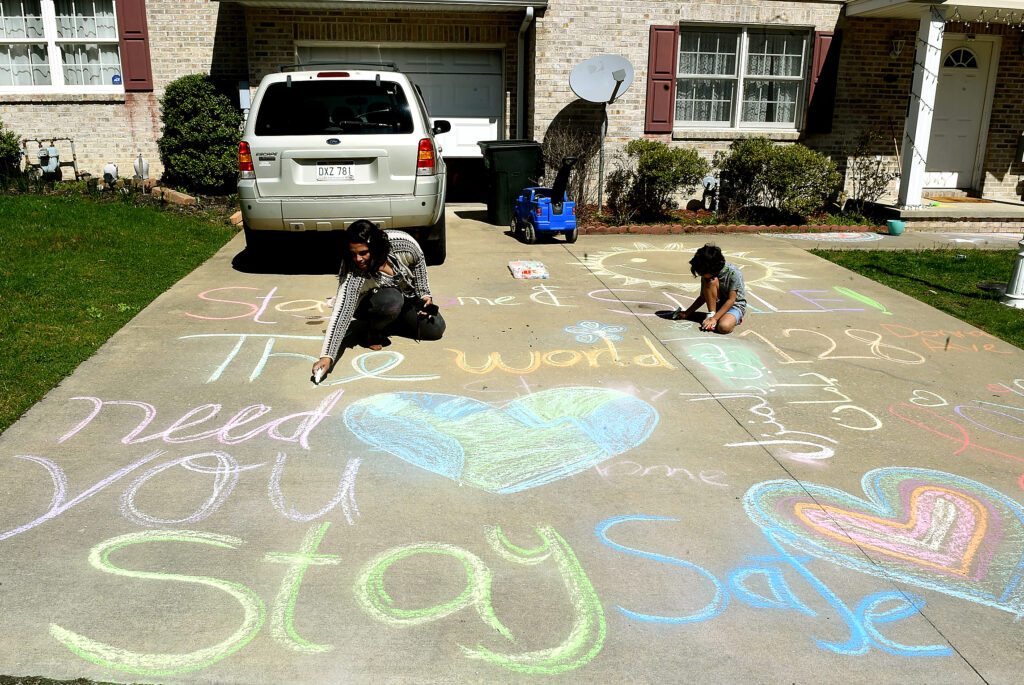
April 2020
- April 1: Primary election date moved from May 12 to June 9. Schools closed until April 30.
- April 3: Outbreak in eastern panhandle announced.
- April 6: National Guard begins helping WorkForce WV process unemployment claims. As of this day, there are 345 cases, four deaths.
- April 8: Monongalia County Health Department confirms more than a dozen WVU students test positive, says they live off campus.
- April 8: Justice tightens his executive order to restrict gatherings to five people; directs all businesses to require employees to work from home to maximum extent possible; directs health departments to establish max occupancy guidelines for social distancing at essential businesses.
The executive orders limit groups to a maximum of five people; direct all businesses to require employees to work from home to the maximum extent possible; direct the health departments to establish the maximum occupancy of and proper social distance within essential businesses and take action to enforce these health regulations; direct the National Guard to provide logistical support and services to assist county agencies; and direct State Police to assist with enforcement of local county orders.
Marsh says we should plan on “at least another 8-14 days of staying home and staying apart.” - April 14: Marsh talks about “repatriation” into normal life. Death toll stands at 10 on this date, with 694 cases. People seem to believe it’s evening out.
- April 16: Justice announces the first $625M of $1.25B in federal CARES money arrived in the state.
Justice mentions that while early models speculated at a national death toll of 1 million. Newer models are saying it may be more like 55,000 to 65,000. - April 20: Justice announces on April 27 hospitals will begin submitting applications to restart elective procedures.
- April 21: Justice announces kids will not return to schools for the rest of the school year. Bill Crouch says 26 nursing homes have begun testing, in response to an order to test all residents and staff at every home; seven have completed testing on this date.
- April 27: Justice announces his six-week plan to reopen the state after initial COVID closures, calling it West Virginia Strong: The Comeback.
In order to move forward, Justice says we need three consecutive days with a cumulative positivity number below 3%. The plan is set to proceed over six weeks, with businesses and services gradually reopening, some at reduced capacity to allow for social distancing.
May 2020
- May 4: Justice issues “Safer At Home” order to replace his Stay at Home order, noting it is still safer to stay home unless necessary to do otherwise.
Justice announces school feeding programs will run through the summer so kids don’t go hungry. - May 6: Justice orders all assisted living facilities and residential care communities be tested, once nursing home testing is complete.
- May 10: Churches and funeral homes may resume services, must follow social distancing guidelines.
- May 21: As part of the ongoing The Comeback plan, restaurants are allowed to resume indoor dining at 50% capacity; large, standalone stores and strip malls also reopen, along with state parks (in-state residents only) and outdoor recreation resumes.
- May 21: Trump administration and AstraZeneca announce a collaboration to speed development of a COVID-19 vaccine.
- May 28: U.S. deaths top 100,000.
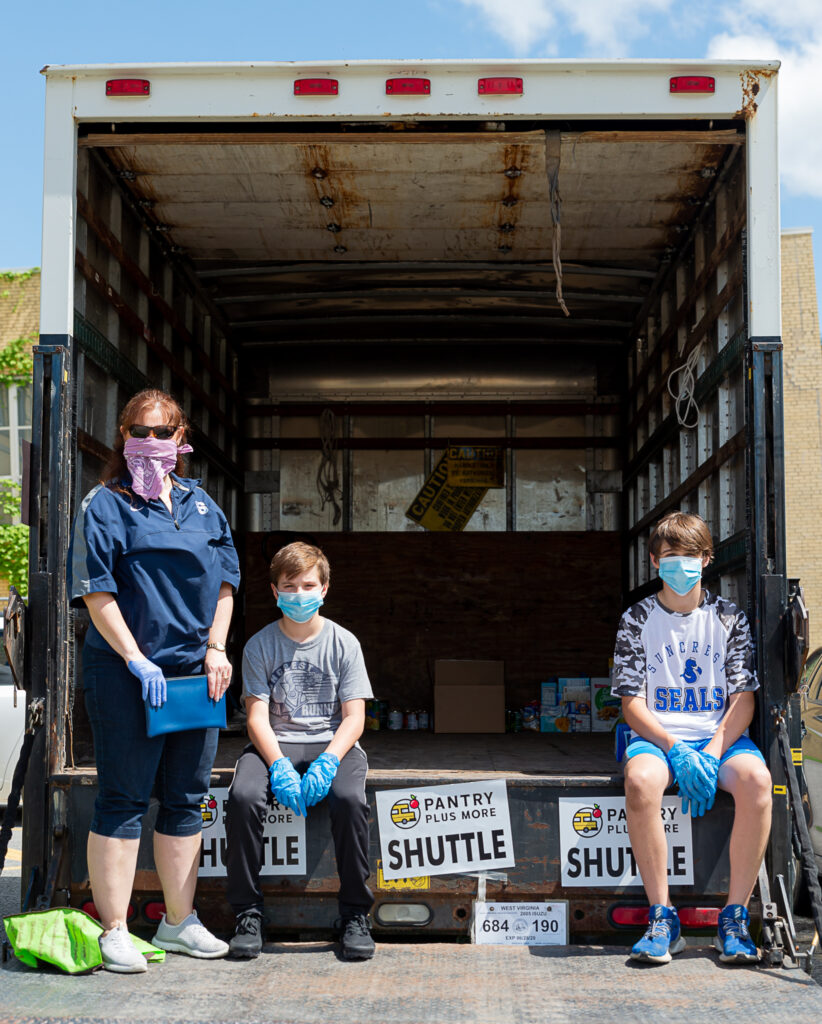
June 2020
- June 1: Nationwide, state and local protests over racial injustice and the killing of George Floyd cause officials to urge protestors to wear masks when participating.
- June 2: COVID-19 Czar Dr. Clay Marsh introduces the term “super-spreaders” during today’s briefing, says some people may have no symptoms but are capable of spreading the virus to others at a higher rate.
- June 5: Justice increases the allowed number of people at public gatherings from 25 to 100, says mask wearing and social distancing still strongly encouraged.
- June 11: Justice announces the state fair will be held as scheduled from Aug. 13-22 in Greenbrier County. It is later canceled.
- June 12: Justice announces statewide testing at all jails and prisons — spurred by an outbreak at Huttonsville prison — has been completed. In eight days, the state tested 10,000 inmates and 4,000 employees.
- June 17: Numerous church outbreaks are reported throughout the state.
- June 24: Justice accepts the resignation of State Health Officer and Bureau for Public Health Commission Cathy Slemp. Bill Crouch said Justice had expressed a “lack of confidence” in Slemp’s leadership “due to a series of recent events involving issues under her direct control.” Justice complains of numbers being misreported — making the state look to be in worse shape than it is.
Morgantown High School, University High School and Clay-Battelle declare face masks are mandatory at their socially distanced graduation ceremonies.

July 2020
- July 1: Mon outbreak traced to bars in the county.
- July 7: The same day that the U.S. reports 3 million COVID-19 infections, the nation begins its withdrawal from WHO, citing its response to the global pandemic.
- July 8: First day of school is pushed from Aug. 20 to Sept. 8; state superintendents in all counties learn of the change during the press briefing — along with everyone else.
- Panel announces we are seeing increased community spread of the virus; after some improvement, infection numbers are increasing — the previous day showed the highest one-day numbers so far in the pandemic, with 19 positive tests.
- July 13: Justice re-closes bars in Mon County for what he says will be 10 days “at least.” Mon’s active cases show a large percentage of people in the 20-29 age group. Justice also moves the crowd limit back down to 25 and re-closes fair and festivals in the state.
- July 17: West Virginia reaches 100 deaths.
- July 21: Two experimental vaccines, one from AstraZeneca and the other from CanSino Biologics, show promising results against COVID-19.
- July 22: The feds strike a partnership with biotech giants Pfizer and BioNTech for a December delivery of 100 million doses of their COVID-19 vaccine candidate, in a deal that could expand, if the vaccine receives approval.
August 2020
- Aug. 5: Justice introduces the state’s color-coded map that will indicate the infection rate for each county and will be used for determining school attendance when schools reopen.
- Aug. 11: Trump administration reportedly agrees to pay $1.5 billion to Moderna for 100 million doses of its vaccine candidate.
- Aug. 12: Justice extends Mon bar closure through Aug. 20.
- Aug. 21: Justice makes changes to the color map, extending mask mandates for students depending on county’s color and altering the way the metrics are tallied.
- Aug. 24: Justice ends the statewide ban on nursing home visitation.
- Aug. 28: Mon bars allowed to reopen.
September 2020
- Sept. 2: Justice orders Mon bars closed again after photos circulating on social media show large crowds of unmasked people gathered outside Morgantown clubs.
- Sept. 6: Justice says no high school football in Mon after the county turns red — making the call on what was supposed to be opening night.
- Sept. 8: Schools reopen in the state, operating based on each county’s color on the coded map. In red counties, all learning must be done remotely.
- Sept. 15: Justice announces a new color — gold — on the county infection rate map, widening the range at which schools are allowed to operate in-person and continue with sports.
- Sept. 16: A plan devised by the feds aims to make a COVID-19 vaccine free for all Americans, with the vaccine being rolled out in January 2021. Once a vaccine is authorized, the plan dictates that 6.6 million kits of supplies needed to administer vaccines will also be distributed. The plan does not include a decision on who would be the first to receive the vaccine.
- Sept. 21: Justice orders ramped up testing in red and orange counties, with community testing lanes beginning to open.
Johnson & Johnson announces that it began a large phase 3 clinical trial of its COVID-19 vaccine candidate. This vaccine does not need to be frozen and may require one administration instead of two.

October 2020
- Oct. 2: Trump, First Lady test positive for COVID-19; Trump hospitalized.
- Oct. 23: State submits its COVID-19 vaccine plan to the U.S. Centers for Disease Control as trials amp up for potential vaccines.
- Oct. 30: Justice continues to amp up testing opportunities in the state, enlisting the National Guard in all gold, orange and red counties.
November 2020
- Nov. 4: U.S. reports all-time high of 100,000 cases in one day.
- Nov. 14: Justice postpones winter sports until Jan. 11.
- Nov. 13: Justice issues Mandatory Face Covering order, says everyone must wear a face covering when inside public buildings unless medically unable to do so.
- Nov. 30: Hospitals again cut back on elective surgeries, due to a surge in positive cases largely linked to Thanksgiving.
December 2020
- Dec. 4: The CDC recommends for the first time that people wear masks at all times when they’re not home.
- Dec. 11: FDA agrees to an EUA for the Pfizer, BioNTech vaccine, allowing shipments to begin; vaccinations of health care workers begin within days.
- Justice lays out the state’s two-phase vaccination plan, which will focus first on health care workers, nursing home residents and staff, public health officials and first responders, etc., before moving on to the general population, at which time age will be a focus of priority.
- Dec. 14: The first doses of the two-dose Pfizer COVID-19 vaccine begin to roll out.
- Dec. 15: Monongalia County Health Department announces it receives first doses of vaccine.
- Dec. 16: Justice announces they’re partnered with pharmacies, including independents, to speed up vaccination plans; vaccination of nursing home residents and staff has begun.
- West Virginia reaches 1,000 deaths.
- Dec. 18: FDA issues EUA allowing shipments of the Moderna COVID-19 vaccine to begin.
- Justice announces the state will soon begin receiving the Moderna vaccine, along with its allotted doses of Pfizer.
- Dec. 30: Justice announces all schools in the state will be encouraged to return to in-person learning Jan. 19, despite the county’s color on the map.
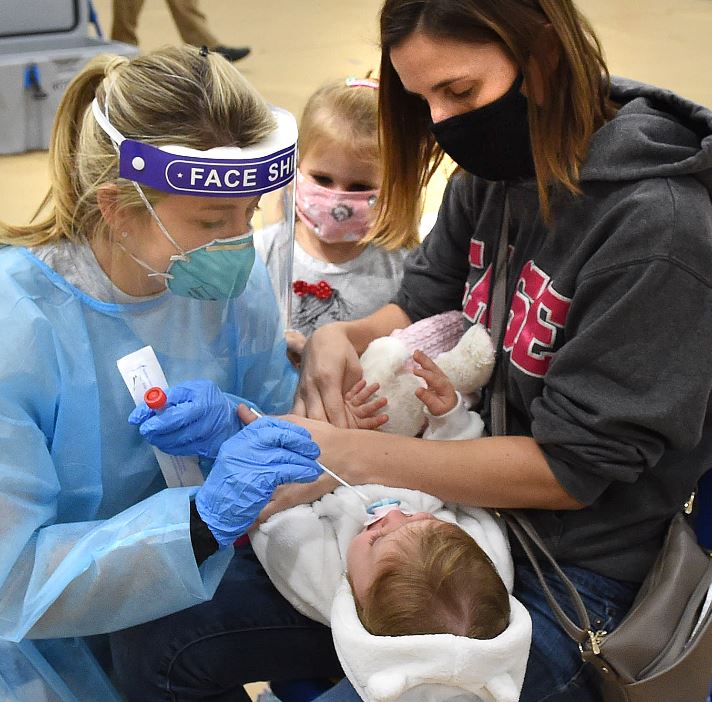
January 2021
- Jan. 7, 2021: West Virginia tops 1,500 deaths.
- Jan. 8: State begins vaccinating all teachers and school personnel 50 and older.
- Jan. 11: The Vaccine Summary tab is added to the state DHHR’s coronavirus dashboard to detail supplies of first and second doses received and administered, along with some graphs and charts and some demographic data.
- Jan. 15: West Virginia continues to lead the nation in vaccines administered, but supply remains a challenge.
- Jan. 19: All elementary and middle schools must reopen to in-person learning, five days a week, per State BOE. High schools to follow.
- Jan. 25: The statewide vaccine scheduling system goes live, allowing residents to preregister online or by phone.
- Jan. 29: The Rev. James Patterson, president of the Partnership of African American Churches, appears during the COVID briefing to introduce a new effort to get vaccinations to communities of color in the state.
- West Virginia passes 2,000 deaths.
February 2021
- Feb. 1: West Virginia is seeing significant improvement in infection rates, as well as a decrease in deaths and hospitalizations.
- Feb. 3: The state sees a 20% increase in its vaccine allotment from the federal government, previously set at 23,000 per week.
- Feb. 9: Partnership with Walgreens will allow for the administration of about 5,800 more vaccines weekly.
- Feb. 12: Teachers and other school personnel age 50 and older receive their second doses of vaccine.
- Feb. 27: FDA issues EUA for Johnson & Johnson one-dose vaccine.
March 2021
- March 3: Age to be vaccinated lowers from 65 and older to 50 and older, as per CDC.
- March 5: Justice announces the removal of capacity restrictions on the state’s bars, restaurants, retail businesses and gyms. Gatherings may increase from 75 to 100. The mask mandate remains in place, and businesses are still expected to follow social distancing guidelines.
- March 10: Justice said 70 health care facilities in 30 West Virginia counties failed to report COVID-19 related deaths in a timely fashion. The failure caused 165 deaths to go previously unreported.
Additional sources: AJMC

